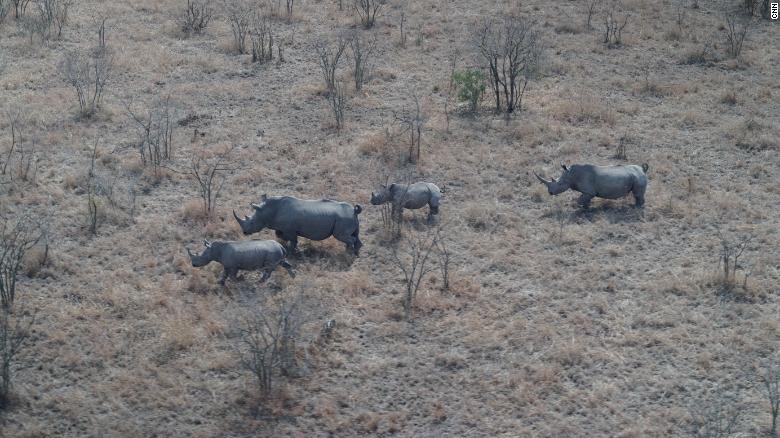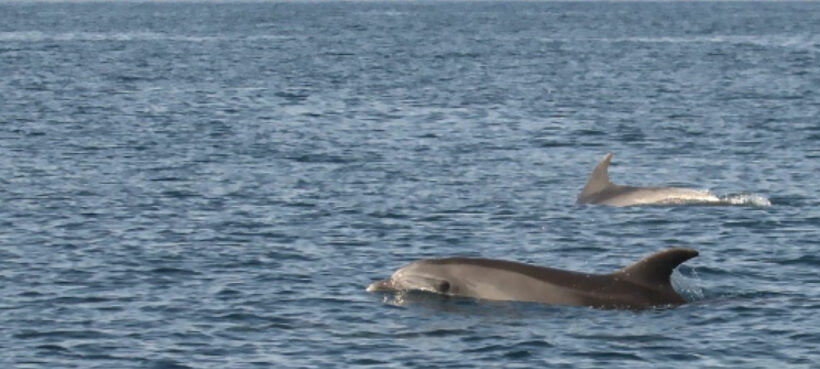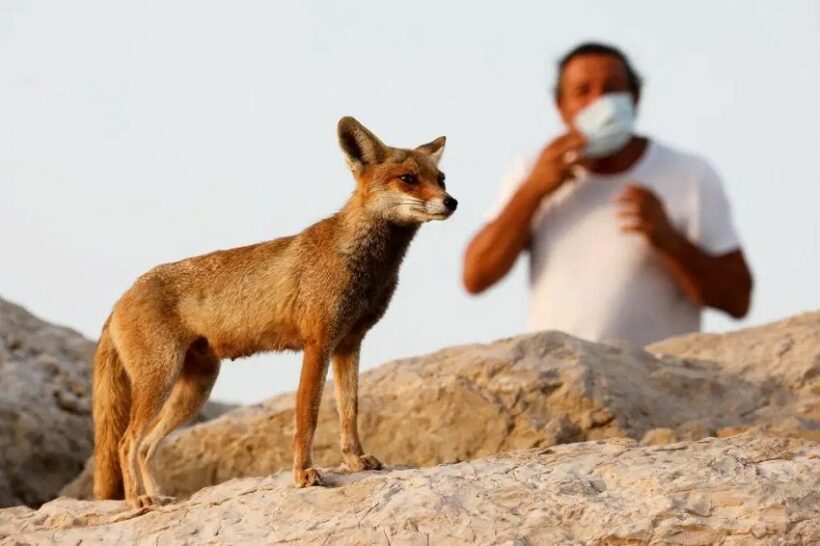
+- WildFact (https://wildfact.com/forum)
+-- Forum: Nature & Conservation (https://wildfact.com/forum/forum-nature-conservation)
+--- Forum: Human & Nature (https://wildfact.com/forum/forum-human-nature)
+--- Thread: Man-Animal Interaction: Conflict & Coexistance (/topic-man-animal-interaction-conflict-coexistance)
RE: Man-Animal Interaction: Conflict & Coexistance - Spalea - 04-02-2020
Marlon du Toit: " to that time had to wait for a young leopard to venture out from beneath a game viewer in Hwange, Zimbabwe. "
RE: Man-Animal Interaction: Conflict & Coexistance - Pckts - 04-02-2020
RE: Man-Animal Interaction: Conflict & Coexistance - bigcatlover - 04-03-2020
RE: Man-Animal Interaction: Conflict & Coexistance - Styx38 - 04-05-2020
I am just posting this to show human-animal conflict. (Mod edit: Do it this way)
Quote:
Disclaimer: Graphic Content
*This image is copyright of its original author
Source: Man Animal Conflict (A study of human-wildlife conflicts in Eastern Vidarbha Region of Maharashtra) by Yashvir Singh
RE: Man-Animal Interaction: Conflict & Coexistance - BorneanTiger - 04-13-2020
A solar-powered 'Meerkat' is protecting South Africa's rhinos: https://edition.cnn.com/2020/02/12/tech/kruger-postcode-meerkat-poaching-intl/index.html?fbclid=IwAR1LzyrEzl8HjuBRjAfrmaQQgtXYyEGNCr7KdDjnGIyuq_FqEn25Uw2fVw4
By Stephanie Bailey and Ed Scott-Clarke, CNN Business
Updated 1048 GMT (1848 HKT) February 12, 2020
Kruger National Park, South Africa (CNN Business) – In South Africa's biggest national park, a camouflaged system of radars, cameras and sensors stands guard.
The solar-powered technology is helping to protect Kruger National Park's rhinos from poachers, and the country's tourism industry as a result. The network can distinguish between human and animal movement and even includes an infrared sensor, so it can spot poachers at night and alert park rangers to their presence. Standing almost 12-feet tall, the system is known as "Postcode Meerkat," after the source of its funding — European postcode lotteries — and the meerkats of southern Africa, who live in family groups protected by one of their own standing on its hind legs and watching for predators.
The economic value of Kruger
In 2018, 15 million people visited South Africa, spending around $8 billion. According to a 2018 paper from the University of Zululand, Kruger received an estimated 1.8 million visitors in the 2016-2017 fiscal year, a number that is predicted to double by 2029. Along with buffalo, elephants, lions and leopards, rhinos are part of the "Big Five" safari animals and a big draw for tourists.
"These parks are a huge revenue generator for South Africa," said Tumelo Matjekane, from Peace Parks Foundation, an organization working to connect conservation areas in southern Africa. "They attract tourists from all over the world. If we are not able to conserve that, those people will not come here and the impact of that on livelihoods, in the communities around the parks, and our economy — it's not measurable," he added.
Saving the rhino
Rhino horn is prized in some Asian countries as a sign of wealth, and mistakenly believed to have medicinal properties. Poaching to meet consumer demand means black rhinos are critically endangered and white rhinos are classified as near threatened.
Rhinos in Kruger National Park.

*This image is copyright of its original author
According to South African National Parks, 421 rhinos were killed in Kruger in 2018. A 2016 survey found there were between 7,000 and 8,000 rhinos left in Kruger, but the park's vast size — around 7,700 square miles — makes it hard to keep them safe.
"Kruger is ... roughly the size of Wales," said Mark McGill, chief technology officer for South African National Parks. "It's difficult to find a person out there ... and apprehend them."
"Postcode Meerkat" is making a difference, however. Launched in 2016, it was developed and manufactured by South Africa's Council for Scientific and Industrial Research (CSIR), South African National Parks, and Peace Parks Foundation. According to Peace Parks' website, in the first 21 months of use there was an 80% decrease in poaching incidents in areas where it was deployed. The technology is portable, meaning it can be moved to poaching hotspots, and there are plans to install it at more sites around the park.
"We've seen the figures that it is actually working," said Charles Petzer, a CSIR engineer who worked on the technology. "If you look at the amount of square kilometers that you can do surveillance on, it is definitely the most cost-effective solution." "It can't replace people," Petzer added. "But it can make it much easier for people to do their job."
RE: Man-Animal Interaction: Conflict & Coexistance - Spalea - 04-22-2020
Beverly Joubert: " Tall grass, glowing golden in the afternoon sun, provides the perfect cover for a tawny coated cat. Momentarily distracted by a flash of movement on the horizon, this male struck the perfect pose before melting into his auburn surroundings. We have spent much of our lives with lions, documenting the big cats in all their unfettered glory, but today they face extraordinary threats as a result of human activity. Poaching, habitat loss, human-wildlife conflict, and trophy hunting have all played a part in decimating lion populations leaving the predators with just 6% of their former range on which to eke out an existence. For a dose of perspective, since the “The Lion King” film premiered in theatres in 1994, lion numbers have dropped by 50%. If we are to save these iconic cats, it is critical that we act now. We partnered with National Geographic in 2009 to create the Big Cats Initiative in an effort to halt the decline of not only lions, but other key feline predators as well. The project supports conservation initiatives in 28 countries that tackle the myriad threats facing big cats. We will never give up."
RE: Man-Animal Interaction: Conflict & Coexistance - BorneanTiger - 04-27-2020
With humans indoors, nature makes a comeback, credit: Chiang Rai Times: https://thethaiger.com/hot-news/environment/with-humans-indoors-nature-makes-a-comeback, https://www.chiangraitimes.com/thailand-national-news/animals-worldwide-take-over-during-coronavirus-lockdown/
Credit: TPDN

*This image is copyright of its original author
Kashmiri mountains goats in Llandudno, Wales, the U.K.:

*This image is copyright of its original author
A red fox in Ashkelon, Southern Levant:

*This image is copyright of its original author
Kangaroo in Adelaide, South Australia:

*This image is copyright of its original author
Cougar in Santiago, Chile:

*This image is copyright of its original author
Rival gangs of macaques fighting in Lop Buri, Thailand:

*This image is copyright of its original author
A school of 22 dugongs, including mothers and babies, happily feeding on sea grass in Trang Province, without the regular disturbance of fishing and tourist boats:

*This image is copyright of its original author
Dogs chasing a wild boar Northwest India, herding it into a sewer trough:

*This image is copyright of its original author
Hungry monkeys clambering over a car in search of food in the village of Ode, near Ahmedabad City:

*This image is copyright of its original author
Wild deer in Japan:

*This image is copyright of its original author
Wild turkeys at Baton Rouge, Louisiana, the U.S.A.:

*This image is copyright of its original author
RE: Man-Animal Interaction: Conflict & Coexistance - Spalea - 04-28-2020
Kevin Richardson: " To me conservation means keeping an open mind and being receptive to ideas or solutions that may sometimes not fit in your set of ideals. It’s about conserving naturally functioning ecosystems, from the smallest bug to the largest mammal (in balance) and not about the individual or a specific species only.(Some species get all the attention.) Considering the ever increasing human population, sometimes managing vast tracts of land results in making some really unpalatable and heart wrenching decisions. Ideally one shouldn’t have to intervene but how do you even begin to control human numbers especially in areas where vast tracts of land still contain biodiversity. A healthy ecosystem needs all the fauna and flora to be operating in equilibrium. On Wednesday I’ll be chatting live to a man who knows this all too well and has a very logical and balanced way of thinking. Stay tuned for more information about times. "
RE: Man-Animal Interaction: Conflict & Coexistance - sanjay - 05-01-2020
Somewhere in Pilibhit TR

*This image is copyright of its original author
RE: Man-Animal Interaction: Conflict & Coexistance - Pckts - 05-02-2020
(05-01-2020, 09:32 PM)sanjay Wrote: Somewhere in Pilibhit TR
*This image is copyright of its original author
Edit: Updated with youtube link, facebook link was not visible
RE: Man-Animal Interaction: Conflict & Coexistance - sanjay - 05-03-2020
Quote:Somewhere in Pilibhit TR
*This image is copyright of its original author
Today this tiger was killed due to mismanagement of forest department of UP. Such a shame
According to Siddharth Singh They shot four dart which was excess and becomes fatal for this mighty beast. Sad story
RE: Man-Animal Interaction: Conflict & Coexistance - Rishi - 05-03-2020
(05-03-2020, 09:26 PM)sanjay Wrote:Quote:Somewhere in Pilibhit TR
*This image is copyright of its original author
Today this tiger was killed due to mismanagement of forest department of UP. Such a shame
According to Siddharth Singh They shot four dart which was excess and becomes fatal for this mighty beast. Sad story
Really? Sure it's that one and not another?.. He was reported to be safely sent back into the forest.
I can't find any news on this.
RE: Man-Animal Interaction: Conflict & Coexistance - sanjay - 05-03-2020
(05-03-2020, 10:00 PM)Rishi Wrote: I can't find any news on this.Search Siddharth Singh on FB and see his post, best man to get information of UP tigers
RE: Man-Animal Interaction: Conflict & Coexistance - Pckts - 05-03-2020
(05-03-2020, 09:26 PM)sanjay Wrote:Almost better than the forced life of captivity or being beaten to death by the villagers.Quote:Somewhere in Pilibhit TR
*This image is copyright of its original author
Today this tiger was killed due to mismanagement of forest department of UP. Such a shame
According to Siddharth Singh They shot four dart which was excess and becomes fatal for this mighty beast. Sad story
What a waste.
RE: Man-Animal Interaction: Conflict & Coexistance - Spalea - 05-07-2020
I would like to post this account inside the "In the edge of extinction - Lions", seeming to me more appropriate... By the way:
Here is the link:
https://phys.org/news/2020-05-genetic-lions-extinct.html
New genetic study of lions may help to prevent them going extinct.
" A large international team of researchers has conducted an extensive genetic analysis of lions, and in so doing, has learned about their evolutionary history. In their paper published in Proceedings of the National Academy of Sciences, the group describes how they confirmed long-term divisions between extant lion populations and showed genetic diversity among modern samples.
Prior research has shown that historically, lions have lived in many parts of the word, even in America. Most such species went extinct, however, including the cave lions that once roamed what is now Eurasia approximately 15,000 years ago. Today, lions live in parts of Africa and India and are endangered—just 20,000 African lions remain in the wild today, and their numbers are dwindling. In this new effort, the researchers carried out an extensive examination of the lion genome as part of an effort to save them from extinction.
The work involved analyzing the genomes of 20 specimens, including the cave lion and 12 historic lines that were known to live sometime between the 15th and 20th centuries—and six specimens from modern African and Asiatic lions.
One of the major findings was that modern lions and several extinct lions shared a common ancestor. They also found that approximately 70,000 years ago, two unique lineages of modern lion lineages emerged—and that cave lions lived in cold climates.
The researchers note that prior studies of the lion genome involved analysis of mitochondrial DNA—in this study, they went much further by looking at the whole genome—some of which was derived from 30,00-year-old lion fossils. They learned that modern lines split off from two different lineages in Africa—one in northern parts of Africa, the other in the south.
The researchers also found that the Asiatic lions living in the Gir forest in India have low genetic diversity due to their small population. And they found that the Asiatic lions evolved from the northern range lions in Africa, though they still had remnants of southern lions in their genome. They did not find any evidence of African lions being introduced into India in modern times. The researchers suggest their findings will help with lion conservation efforts in both India and Africa. "
